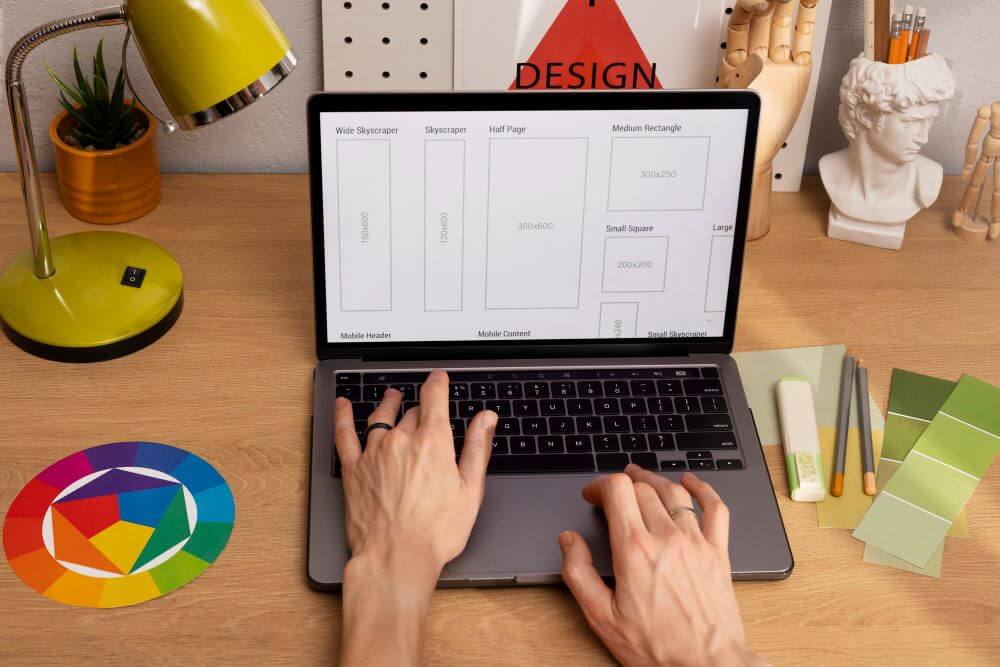Let’s face it, having a generic landing page is like shouting into a void. Your visitors are overwhelmed with options, and if your page doesn’t immediately speak to their needs, they’ll click away without hesitation. This is the “One-Size-Fits-None” problem. Whether your goal is to get sign-ups, sell a product, or promote an event, using the wrong landing page template can leave you invisible to your audience.
The truth is simple but game-changing, different goals require different templates. When you understand what makes your visitors tick, you can create unique experience with the landing page template you chose and leads them straight to action. Here’s how to choose and customize targeted templates that actually convert.
TL;DR
- Generic landing pages can fail conversions; tailoring templates to specific goals is essential for success.
- Each template type, such as Lead Magnets and Product Sales pages, should focus on clear messaging and align with visitor intent.
- Users are more likely to convert with urgency-driven features like countdown timers and compelling value propositions.
- Key platforms for effective templates include Wix, Unbounce, and Leadpages, offering features for analysis and optimization.
- Simple tweaks like clarity tests and mobile optimization can significantly enhance user engagement and conversion rates.
The “One-Size-Fits-None” Problem
If your landing page hasn’t been pulling its weight, your visitors probably feel one of two things, confusion or indifference. Neither is great for conversions. The wrong design, unclear messaging, or too many distractions can all lead to the dreaded bounce.
Here’s why most generic landing pages fail:
- Mismatched Goals: Every landing page should serve a specific purpose, whether it’s to capture email leads, drive product sales, or promote a webinar. A generic template doesn’t account for these unique goals. For example, a page designed to collect emails may prioritize simplicity and a single form field, while a product sales page requires more detailed content, testimonials, and persuasive calls-to-action. Using the wrong design for the wrong purpose leads to poor results and wasted efforts.
- Psychological Misfires: First impressions matter, and online, they happen in seconds. If your landing page doesn’t instantly communicate its value or fails to capture attention, visitors will leave without hesitation. Elements like a clear headline, engaging visuals, and a strong value proposition must work together to make an impact. A generic page often lacks this personalization, leaving visitors unconvinced and uninterested.
- Lack of Focus: Successful landing pages guide users toward one clear action, whether it’s signing up, purchasing, or learning more. Generic pages often have too many distractions multiple buttons, mixed messages, or irrelevant information that confuses visitors and make it unclear what they should do next. This lack of focus can cause users to abandon the page entirely, reducing your chances of achieving your goal.
The solution? Templates tailored for specific goals. By matching the design and structure of a page to its purpose, you set the stage for conversions, whether that means turning visitors into customers, attendees, or email subscribers.
Template Types That Actually Convert (The Real MVPs)
Not all templates are created equal. The good news? There’s an ideal type for every goal. Here’s a breakdown of the MVPs of conversion-worthy landing pages.
Lead Magnets – The “Give Me Your Email” Masters
This template is made for one clear purpose, building your email list. Your visitors get value upfront in exchange for their email address, whether that’s an eBook, free trial, or exclusive newsletter content.
- Design Formula: Big promise, minimal form fields, and an irresistible freebie. Keep it sleek and focused.
- Example Use: A fitness coach offering a free meal-plan PDF in exchange for email sign-ups.
- Why It Works: The immediate value motivates visitors to take action without hesitation.
Product Sales – The “Shut Up and Take My Money” Pages
When you’re selling a single product, your landing page needs to remove all distractions and focus entirely on the item at hand.
- Design Formula: Product gallery, glowing reviews, urgency-driven elements like limited-time offers.
- Example Use: A boutique selling handmade jewelry, with a single product highlighted on the landing page.
- Why It Works: A clear path to purchase keeps visitors laser-focused on buying without wandering off.
Service Businesses – The “Trust Me, I’m Professional” Approach
For consultants, agencies, or local services, credibility is king. This template type focuses on building trust and authority through testimonials and case studies.
- Design Formula: Before-and-after galleries, industry certifications, professional language.
- Example Use: A home renovation company showcasing completed projects and client testimonials.
- Why It Works: Visitors are more likely to choose services they feel are credible and experienced.
Event Registration – The “FOMO Generator” Templates
Need to fill seats fast? Event-focused templates use urgency and excitement to get people clicking “Register.”
- Design Formula: Countdown timers, speaker highlights, limited-seat warnings.
- Example Use: A digital marketing trainer promoting an upcoming workshop.
- Why It Works: Playing into fear-of-missing-out inspires fast action.
App Downloads – The “There’s an App for That” Pages
Highlighting your app’s key features with visual impact can skyrocket downloads.
- Design Formula: Mobile mockups, feature highlights, and direct links to app stores.
- Example Use: A startup promoting their productivity app with screenshots of its sleek interface.
- Why It Works: Demonstrating the app’s benefits visually makes the download decision effortless.
The Template Matchmaking Process
Choosing the right template starts with understanding what your visitors are looking for. Are they researching solutions, ready to purchase, or simply curious?
Here’s how to align your template to the audience’s needs:
- Know Your Audience Phase: Think like your visitors. Are they desperate for a solution? Curious about options? Skeptical of promises? Their emotional state should shape your landing page’s tone and structure.
- Match Template Energy: For visitors who are ready to act, use bold calls-to-action and urgency. For colder traffic that’s still researching, emphasize trust-building elements such as testimonials and social proof.
- Hot vs. Cold: Appeal to hot leads (ready to buy) with urgency and clear offers. For cold traffic, offer low-commitment actions like downloading a free resource.
Platform Power Play: Where to Find Your Perfect Match
Finding templates that work includes choosing the right platform. Here are four solid options worth your time.
Wix – The Swiss Army Knife of Landing Pages
Why Choose Wix? They’ve got over 80 conversion-focused templates by category, and the mobile editor is easy to use. Best Features: Built-in analytics for tracking success, making adjustments quick and easy.
Unbounce – The Conversion Nerd’s Paradise
Why Choose Unbounce? Templates here are designed by experts with conversion in mind. Best Features: Built-in A/B testing and smart traffic routing to fine-tune your page.
Leadpages – The Speed Demon
Why Choose Leadpages? Speedy loading times and tons of templates (160+). Best Features: LeadBoxes for pop-up forms that appear exactly where you need them.
ConvertKit – The Creator’s BFF
Why Choose ConvertKit? Perfectly tuned for email-focused landing pages, especially for creators. Best Features: Native integrations that play nice with your email marketing tools.
Customization That Converts (Not Just Decorates)
Now that you’ve picked a template, it’s time to fine-tune it for maximum impact.
Color Psychology Hacks
Use red buttons to create urgency or green buttons to encourage action and trust. Tie your look to your brand colors but amplify conversions by incorporating proven shades.
Copy That Delivers
Hook eaders with strong headlines that address a clear pain point. Focus on benefits over features, and keep the call-to-action singular and unmistakable.
Trust Triggers That Work
Use real photos instead of stock images for authenticity. Include numbers or specific stats in testimonials for credibility. Add security symbols where people expect them.
Test Before You Tweak
Don’t fall into the testing trap by trying to change everything all at once. Start with:
Headline variations. Button text on your CTA. Page images and layouts.
Quick Wins: Template Tweaks for Instant Results
Looking for quick ways to improve your website? Start with these small but impactful changes.
- The Clarity Test: Ask yourself, can someone understand what your page offers within five seconds? If the message isn’t clear, it’s time for a rewrite or redesign. Clear and concise messaging can significantly boost engagement.
- The Mobile Check: With most users browsing on smartphones, your page must look great and function seamlessly on mobile. Test for smooth thumb navigation, readable text, and fast loading times to ensure a positive mobile experience.
- The Grandma Test: If your grandma can navigate your site and understand what to do, chances are you’re nailing simplicity and user-friendliness. Clear, intuitive design benefits all users and makes your site more effective.
Final Thoughts
A great landing page starts with the right template and ends with a focus on what your audience truly needs. By understanding their mindset, choosing targeted designs, and making strategic tweaks, you can turn casual visitors into motivated action-takers.
Customization, testing, and knowing when to add that touch of urgency can take your pages to the next level. Whether you’re aiming for more downloads, higher sales, or a bigger email list, there’s a template and strategy out there waiting to make it happen.

















